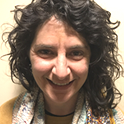
Have you ever lived in a desert? The kinds where weeks or years go by without rain? I did for a short time, living in the Sonoran Desert for a month and the Negev Desert for seven weeks. It didn’t take long to miss green so deeply that when I drove out and saw a tree with real leaves for the first time in weeks, I felt pure joy.
If you, like me, live in a Chesapeake Watershed, then you live no more than a mile from a stream. We worry not for water.
But in the desert, every plant and animal is designed to capture and store water for as long as possible – tens of years they might go without a drink. The dry shades of tan are painted on the mountains with a thirsty paint brush. The vast sand is palpably ancient – dry, empty valleys are carved where water once flowed.
In that place, it doesn’t rain but once in 30 years or so. And when it does, the clay particles below the surface of the sand quickly seal up, forcing water to flow over them, rather than be absorbed downward. The waters amass over land in a flash, flooding drainage basins. Just as quickly, the water wants to escape and become the sky again: grey clouds climb up the dry, tan mountain sides in a strange, other-worldly incongruity. It’s as if you are standing in the Alps of Switzerland or the Cloud Forests of Central America and the desert all at once.
Rivers, made of sky-drops, appear as if out of nowhere. Houses could be swept away. Some people, unaccustomed to and excited to witness the floods, may be swept away. Then two days pass, and as the floods evaporate into desert skies, rainbows emerge.
I have seen those odd desert clouds, those markers that the water cycle is happening, right here, all around me, right now. I breathed and the water in my breath became one with clouds. Like magic. Because we are made of water. And to live, we must harness water in our most intimate daily tasks.
We drink water, cook with water, wash our hands with water. Our food only grows when plant roots drink up invisible nitrogen molecules, dissolved into the water – exactly what their leaves need to live. And then we can eat. Or smell lilies. Or capture shade from big, old trees. Access to fresh, clean water saves lives.
And yet, life-giving nitrogen is not the only element in our water. There is so much more we can’t see in the water: the arsenic we put into the water where our rice grows; the bleach in the toilet cleaners we flush back into our streams. Heavy metals, released by our trash incinerators into the air, stick to the water droplets. Those become clouds and rain down into our water or simply stick to our lungs when we, and our children, breathe. The coronavirus travels invisibly on the water in our very breath. Lead in our water pipes, untreated, corrodes the pipes and takes the lead with it into our bodies, which are more than 70 percent water.
And then there is the heat in the water that makes wind. And the wind born of hot spots over oceans moves tons and tons of water at once, raising waves onto cities and towns whose trees don’t have enough root straws to drink up all the water at once – or were bulldozed decades ago. This water fills the broken spaces between levees. The annual rise in the Chesapeake Bay, induced by faraway icecaps melting too fast in water warming too fast, centimeter by centimeter, will soon erase the edges of our harbor. A society whose social structures are corroded, will have water which destroys life.
In the shared creation stories of the Jewish, Christian, and Muslim peoples, we read that water was just… there. At the beginning. Along with God and shaped by God. Water is the tool of God – with it God separates, creates, saves, and destroys. I have not believed in a literal God for a long time, yet the natural metaphors of our stories help me visualize the connections I have to everything else in the universe. As I write this, it is raining – a late spring lightning shower over Baltimore. I am remembering desert rains and the rainbows that follow the floods: We will be better, we promised. With our use of water and everything we put in it, we have the power to harness and create a life-affirming society. Let us remember what we are made of.
 Laura Menyuk is the Farm to School Specialist at Great Kids Farm of Baltimore Public Schools, a leader with Baltimore’s Jews United for Justice, and a member of the 2020 ICJS Justice Leaders Fellowship.
Laura Menyuk is the Farm to School Specialist at Great Kids Farm of Baltimore Public Schools, a leader with Baltimore’s Jews United for Justice, and a member of the 2020 ICJS Justice Leaders Fellowship.
Baltimore is part of a national conversation around questions of justice, race, and community. Members of the ICJS Justice Leaders Fellowship consider how Jewish, Christian, and Muslim teachings and practice can contribute to the public conversation about (in)justice. Opinions expressed in this blog are solely the author’s. ICJS welcomes a diversity of opinions and perspectives. We do not seek a single definition of justice between or within traditions.